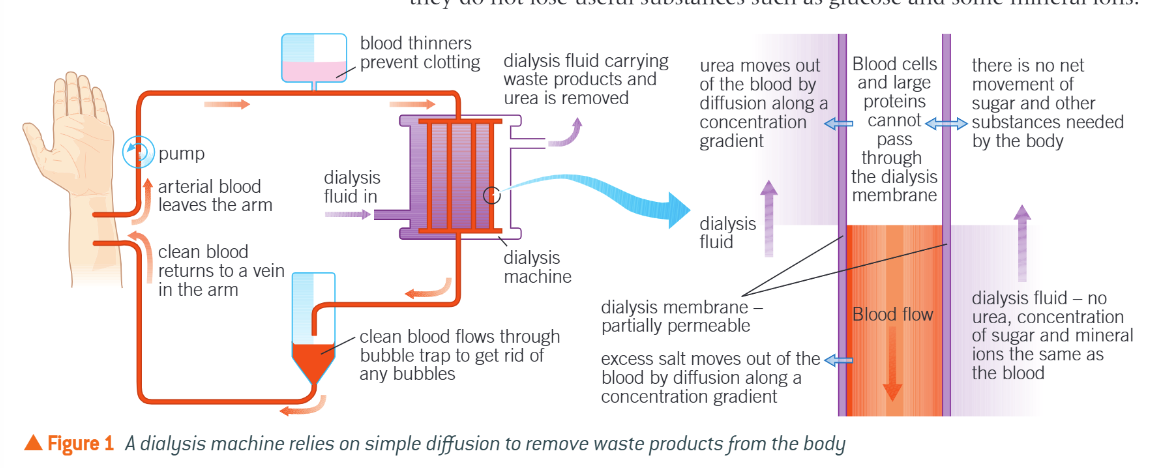Kidney Failure
1/14
There's no tags or description
Looks like no tags are added yet.
Name | Mastery | Learn | Test | Matching | Spaced |
|---|
No study sessions yet.
15 Terms
What happens if kidneys fail completely?
Concentrations of urea and mineral ions build up
Loss of electrolyte balance
If kidneys fail:
Body cannot excrete excess Na+, K+, Cl- ions
Causes osmotic imbalances in tissues & eventual death
Decreased water in cells
Built up urea
If kidneys fail:
Body cannot get rid of urea
Can poison cells ; is toxic
High blood pressure
Kidneys maintain water balance, so help control b.p. If kidneys fail:
B.p. increases
Positive feedback w. increased ions in blood
Can lead to heart problems & strokes
Weakened bones
Calcium/phosphorous balance in blood is lost
Joints
Pain and stiff
Due to abnormal proteins build up in blood
Anaemia and RBC production
No erythropoietin hormone to stimulate RBC production
Leads anaemia, being lethargic and tired
What is GFR
Glomerular Filtration Rate
Used to determine kidney disease
How is GFR determined
Blood test measures level of creatinine in blood
Is a breakdown product of muscles ; used to give estimation
If levels go up, kidneys not working properly
What factors need to be taken into account when working out GFR?
GFR decreases w. age
Men usually have more muscle mass and so more creatinine than women
2 ways to treat kidney failure
Renal dialysis (Haemodialysis)
Transplant
Haemodialysis
Dialysis machine
Usually in hospitals - some have at home
Has to be repeated regularly , takes 8 hrs
Need to manage diets carefully (little protein & salts)
Is readily available
Expensive
Depends on diffusion down conc. gradients
How does haemodialysis work?
Blood leaves patient’s body from artery & flows in thru partially permeable dialysis membranes
Mimics basement membrane of B.C.
Contains normal plasma levels of glucose & mineral ions so no net movement of g out of blood
Excess mineral ions move down conc. g by diffusion
Contains no urea
Steep conc. gradient, much leaves blood
Blood & dialysis flow in opp. directions to maintain counter current exchange system & maximise exchange

How does transplant work?
Blood vessels are joined and ureter of new kidney is inserted into bladder
If successful, kidney will function for many years
Transplant
Risk of rejection
Antigens on donor differ from antigens on recipient’s cells
Match as close as possible (tissue type)
Immunosuppressants
Helps prevent rejection
Prevent effective responses to new infectious diseases
Don’t need to diet, or go to regular, long dialysis sessions
Shortage of donors